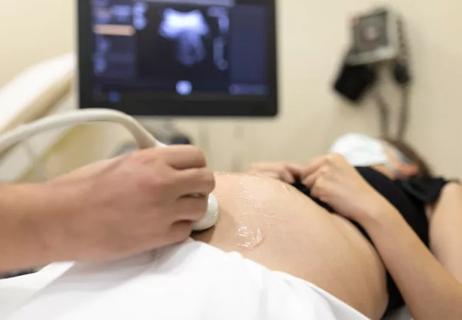Descriptive study gives insight into feto-neonatal cardiopulmonary transition

Neonates experience an increase in blood pressure immediately following birth, followed by a decrease after delayed umbilical cord clamping, according to a recent study. This decrease in blood pressure is sustained for at least the first 24 hours of life.
Cleveland Clinic is a non-profit academic medical center. Advertising on our site helps support our mission. We do not endorse non-Cleveland Clinic products or services. Policy
In the prospective study, researchers measured the blood pressure of healthy, full-term neonates delivered vaginally following low-risk pregnancies. “Before this study, we could only speculate about the changes that occur immediately after birth,” states Giancarlo Mari, MD, maternal-fetal medicine specialist with Cleveland Clinic’s Department of Obstetrics and Gynecology and senior author of the study.
In utero, only about 7% of the blood flowing through a fetus goes to the lungs, Dr. Mari explains. At this time, the placenta is not only the organ that provides nutrition, but it is also the respiratory system. After the cord is clamped and the neonate begins to breathe, 100% of the blood goes to the lungs. This is part of a series of changes that occur in the moments after birth, as the body shifts from a parallel to a serial cardiovascular circuitry.
“A lot of what we know about this feto-neonatal cardiopulmonary transition is from animal studies, as clinical, methodological and ethical issues prevented human studies. However, once delayed cord clamping became considered a standard of care, we were able to design this study to give us a clearer picture,” says Dr. Mari. Previous studies reported blood pressure in neonates 1 minute after cord clamping.
The study included 54 patients born vaginally from singleton pregnancies at a mean gestational age of 39/3 weeks. Mean values for systolic, diastolic and mean blood pressure prior to delayed cord clamping were 97 ± 24.9 mmHg, 58 ± 21.9 mmHg and 67 ± 27.7 mmHg, respectively. At 30 minutes of age, mean values for systolic, diastolic and mean blood pressures were 70 ± 15.4 mmHg, 36 ± 11.9 mmHg and 48 ± 12.4 mmHg, respectively.
Immediate cord clamping is considered an interruption to the natural process of transition from fetal to neonatal life, according to Hany Aly, MD, Chair of the Department of Neonatology at Cleveland Clinic Children’s. “In all animal species, the placenta continues in communication with the delivered fetus for a long time – until it completely stops pulsating and is disconnected by the delivering mother,” Dr. Aly says.
Delayed umbilical cord clamping, defined as cord clamping at least 30-60 seconds after birth, allows blood flow to continue between the placenta, umbilical cord and infant, which has benefits for both term and preterm infants. In infants born at term, delayed cord clamping increases hemoglobin levels and improves iron stores. In preterm infants, delayed cord clamping reduces the rates of intraventricular hemorrhage, necrotizing enterocolitis and transfusion.
“The practice of delayed cord clamping has only been widely accepted in the last several years. The reported outcomes are better, as the neonate receives more blood. Delaying also gives the baby more time to transition to life on the outside. Birth can be a bit of a shock – by delaying clamping, the infant can start to breathe while still attached to the placenta,” Dr. Mari says.
Limitations to the study include the number of subjects studied and the inability to measure the blood pressure continuously. Dr. Mari notes that future studies might measure blood pressure following birth by cesarean section, in pre-term neonates, or in neonates whose mothers have a precondition such as preeclampsia.

Perioperative prophylaxis and class III obesity

Biomarkers can predict who is at risk for severe disease

Supporting birthing patients through newer tools and strategies

Disease associated with higher risks for maternal and fetal morbidities

Reproductive health specialists discuss tough-case abortion care

Post-evacuation hCG increase can mean more than one thing

A daily dose of 82 mg can help mitigate preeclampsia and preterm birth as part of holistic patient care

Comparing strategies for cesarean prophylaxis with penicillin allergy